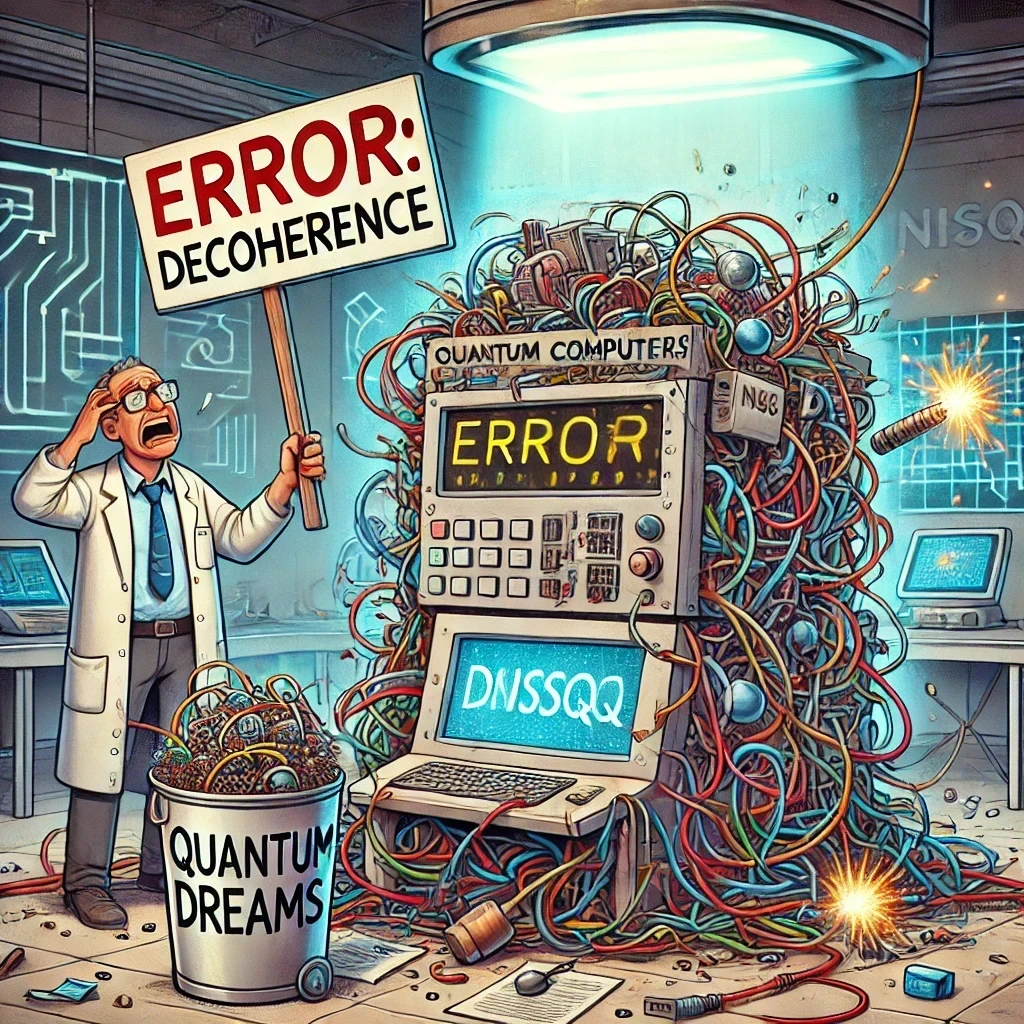Noisy Intermediate-Scale Quantum (NISQ) Computing

Introduction
We are not yet in the age of large-scale, fault-tolerant quantum computing. The dream of running large quantum circuits free from noise and errors remains just that—a dream.
Instead, today’s quantum computers are NISQ devices: Noisy Intermediate-Scale Quantum machines. They are small, error-prone, and far from perfect, yet they still offer a glimpse into the potential of quantum computing.
A useful analogy is the early days of classical computing:
- Early vacuum-tube computers (1940s) were unreliable, slow, and limited in scale.
- Modern supercomputers (today) are fast, scalable, and fault-tolerant.
- NISQ devices are like early vacuum-tube computers: experimental but promising.
We’re in an exploratory phase, testing what quantum computers can do and how they can be useful.
What Does “NISQ” Mean?
The term “NISQ” (coined by John Preskill) defines the current generation of quantum computers:
- Noisy: machines aren’t perfect, leading to high error rates that limit circuit depth (number of operations).
- Intermediate-Scale: devices have 50-1000 qubits, enough to explore quantum advantage but not yet for full error correction.
- Quantum: despite noise, they still outperform classical computers for specific tasks.
While NISQ devices are promising, they have several significant limitations such as short coherence times, high gate errors that limit the depth of computations, leading to no fault tolerance.
Because of these limitations, NISQ computers can’t yet tackle problems like breaking RSA encryption. Instead, they sit in the space between theoretical quantum advantage and practical quantum computing—not yet game-changers, but far from useless.
What Can We Do with NISQ Computers?
Even with these limitations, NISQ devices can still do useful things:
- Quantum Chemistry: the Variational Quantum Eigensolver (VQE) helps simulate molecular structures, useful in materials science.
- Quantum Optimization: the Quantum Approximate Optimization Algorithm (QAOA) can help solve logistics, finance, and other optimization problems.
- Quantum Machine Learning: quantum-enhanced kernel methods, quantum neural networks offers new approaches to machine learning.
One of the most promising NISQ-era algorithm is Variational Quantum Eigensolver (VQE). It’s a hybrid quantum-classical algorithm that uses quantum circuits to estimate eigenvalues and classical optimizers to refine them. VQE is particularly useful for finding molecular ground states (a molecular system’s lowest energy state), which is useful in drug discovery and materials design. VQE is a great example of how quantum computers and classical computers can work together to solve real-world problems.
Future Beyond NISQ
The long-term goal of quantum computing is to build fault-tolerance—where logical qubits enable deep, error-free computations. The path from NISQ to fault-tolerant quantum computing involves several steps like error mitigation and correction, hardware improvements, and better scalability.
Jensen Huang, CEO of NVIDIA, recently suggested that fault-tolerant quantum computing is still 20+ years away—and I strongly agree. But who knows? Maybe some genius will come up with a breakthrough that shatters the timeline.
All images in this article were generated by ChatGPT.

Leave a comment